PJM Interconnection—one of the U.S.'s largest grid operators—released a phase three report showing that fossil-fuel plants will be shutting down in favor of green energy. These plant shutdowns could potentially cause the destabilization of the grid and result in unreliable service to thousands of households. PJM predicts the retirement of energy resources through 2030 will put a strain on the grid because of "mismatches" in load growth and the lower "pace of new generation entry."
PJM is a "regional transmission organization (RTO) that coordinates the movement of wholesale electricity in all or parts of Delaware, Illinois, Indiana, Kentucky, Maryland, Michigan, New Jersey, North Carolina, Ohio, Pennsylvania, Tennessee, Virginia, West Virginia and the District of Columbia." PJM coordinates the energy supply for 65 million people in "all or parts of the 13 states and D.C."
The organization's strategic focus is on "helping to facilitate state and federal decarbonization policies reliably and cost-effectively." It issued its third phase study on the ongoing impact of the energy transition on Friday. Something is clearly changing because the first two phases of the energy transition study showed it "had adequate resources to meet load" requirements.
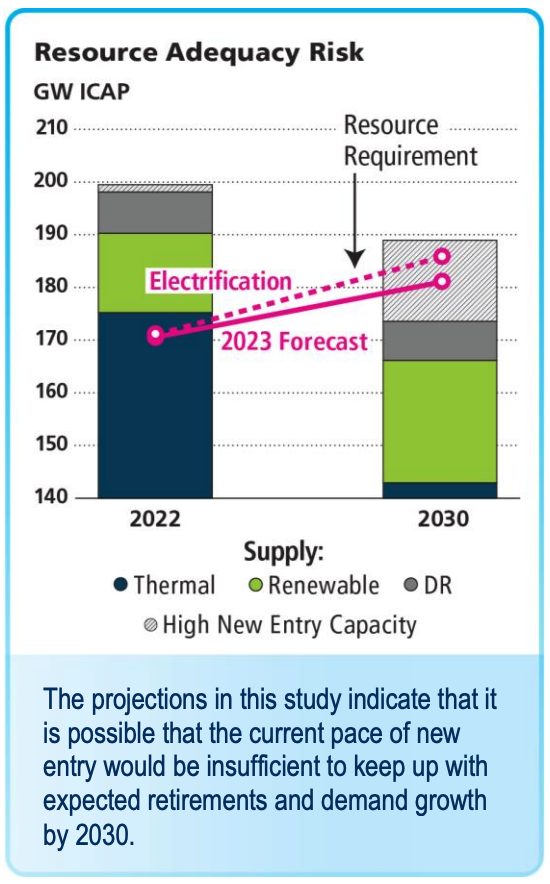 PJM/Feb. 24 report
PJM/Feb. 24 report
PJM highlighted four trends it believes will "increase reliability risks":
 PJM Report/Feb. 24, 2023
PJM Report/Feb. 24, 2023
According to a WSJ Op-Ed on the PJM report, the impact on consumers will be a destabilization of the electric grid, with "shortages and blackouts" sure to be on the horizon. The study found that "for the first time in recent history, PJM could face decreasing reserve margins" if the trends continue. The WSJ reports:
Growth in Demand Outstrips Availability of Resources
The analysis from the report points to 40 GW of "existing generation are at risk of retirement by 2030." This represents 21% of PJM's currently installed capacity. Growth in demand is projected at 1.4% per year for "the PJM footprint over the next 10 years." As fossil fuel plants retire, policy demands for renewables far outpace the demands for natural gas and coal. Renewables are a hot policy item for Democrats, driving much of the current demand. According to the PJM report, renewables are 94% of future energy plans. The use of fossil fuels is projected to be only at 6%. The report lays bare the realities of transitioning from fossil fuels to renewables when it reveals that the completion rate for projects involving renewables is relatively low at 5%.
The costs of complying with policy-driven green energy requirements are high. Traditionally, "thermal resources have provided the majority of reliability services." However, PJM states that a confluence of conditions, including state and federal policy requirements, industry and corporate goals requiring clean energy, reduced costs and subsidies for clean resources, stringent environmental standards, age-related maintenance
costs, and diminished energy revenues are hastening the decline in thermal resources." The costs of mitigation and compliance are disadvantageous to the continuation of fossil fuels as an energy resource. Coal-fired resources accounted for "approximately 89% of retired capacity in 2022" according to the report.
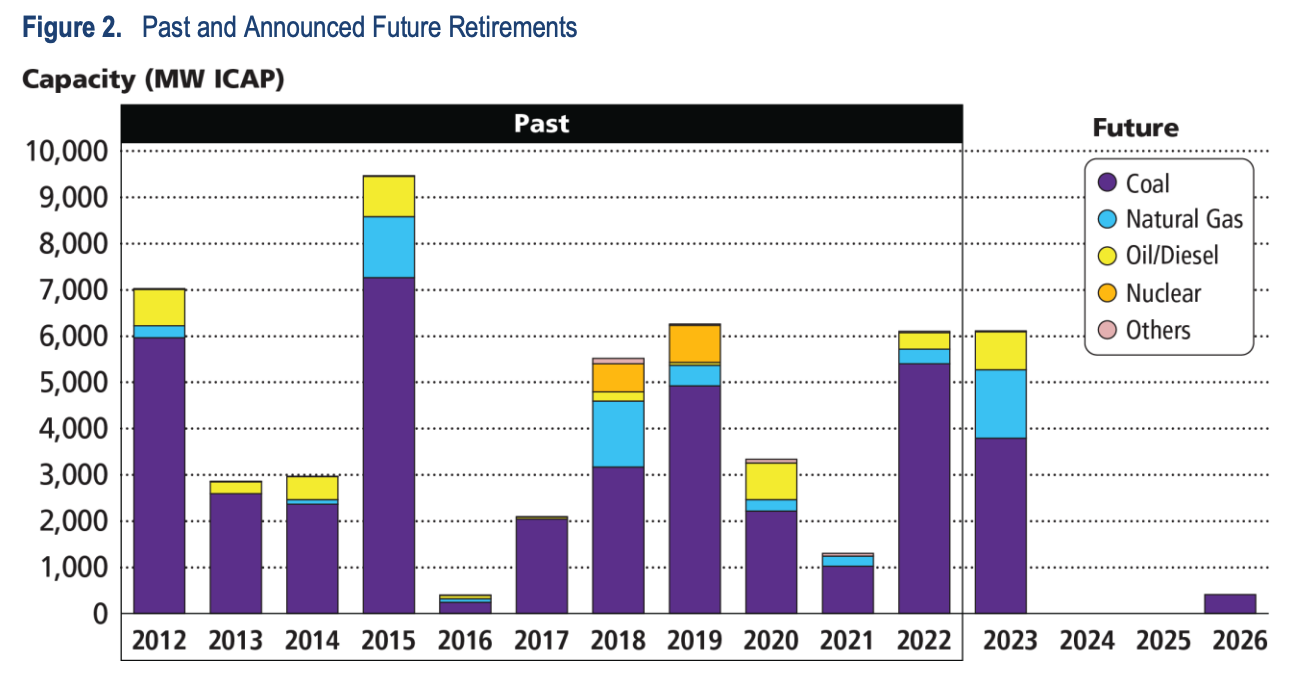 PJM/Energy Retirements/Graph P. 6
PJM/Energy Retirements/Graph P. 6
The Energy Industry is Policy-Driven
Pages 6 through 8 of the report show the direct impacts of energy policy on the retirement of reliable energy resources. PJM lists the regulations studied and how implementing those policies materially impacts decisions to retire coal and natural gas plants. The report also mentions the impact of ESG (Environmental, Social, Governance) commitments that make it untenable to continue using coal in some states. Those states may be relegated to relying upon "good neighbor states" for power, an expectation that may turn out to be unfulfilled.
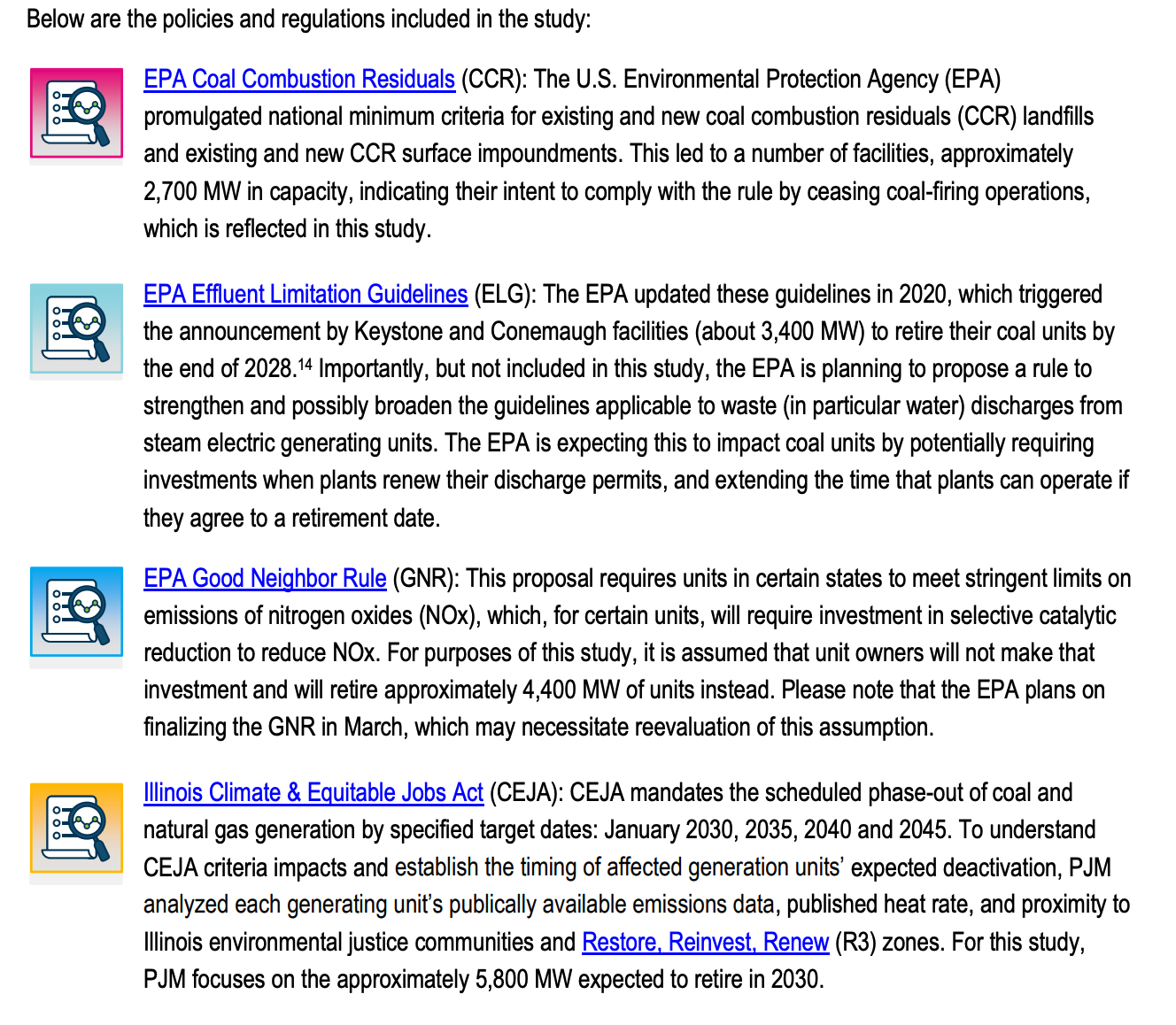
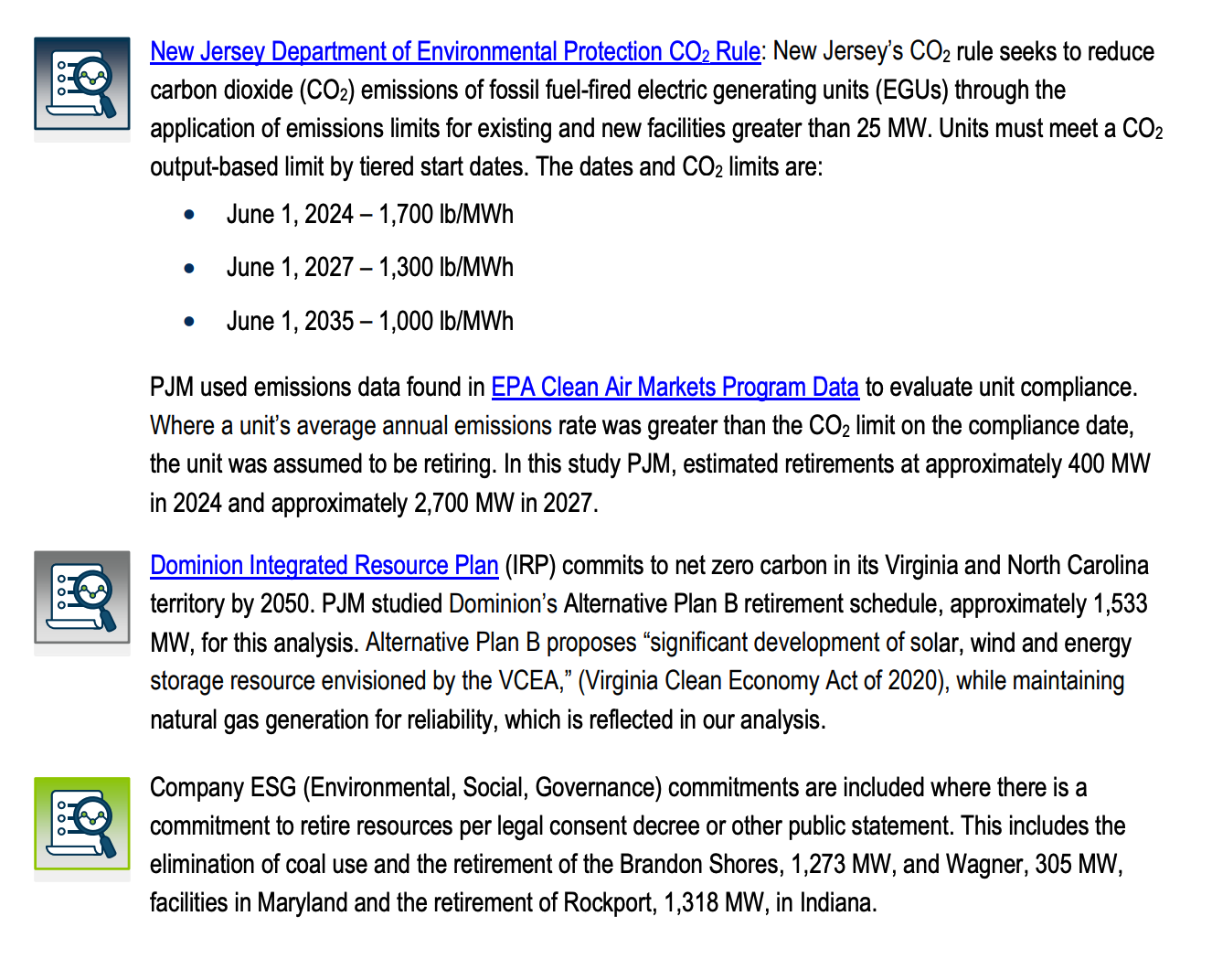
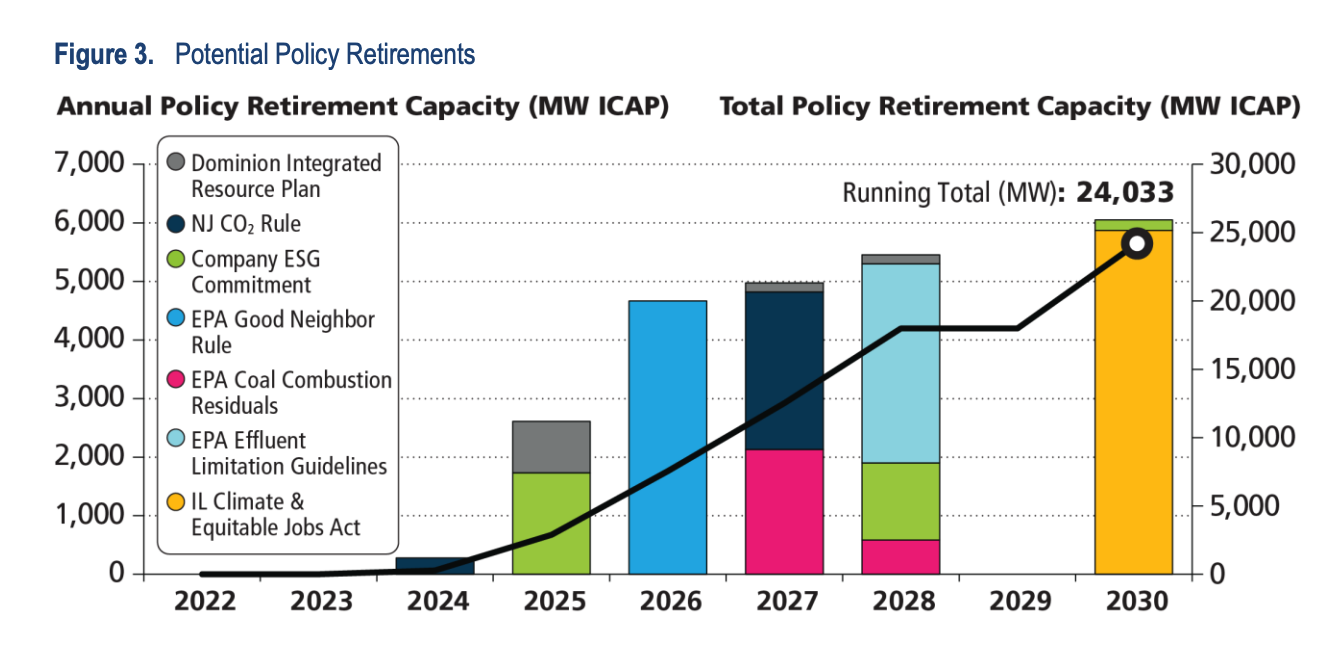
The Reality of Green Energy Hits Hard
The findings in the PJM report imply that a move to renewables that disregards reality will almost certainly result in real-world misery for consumers. There are multiple real-world examples of how poorly considered energy policy burdens the grid and creates hardships for consumers. The Biden administration has aggressively pursued climate and green energy policies throughout its tenure.
In December 2022, the Tennessee Valley Authority begged consumers to reduce energy usage during a cold snap. Tennessee is one of the 13 states serviced by PJM. As we speak, Los Angeles is experiencing power outages because of "strong winds and rain." In Feb. 2021, the Electric Reliability Council of Texas (ERCOT) initiated rolling controlled outages to manage the flow of electric power because the wind turbines froze. Texas ranks #1 in the nation for its transition to wind energy and #2 in solar installation. Both California and Texas have invested heavily in a green-energy transition. According to the U.S. Energy Information Administration, Texas, Washington, and California are the top three states to invest in renewable energy.
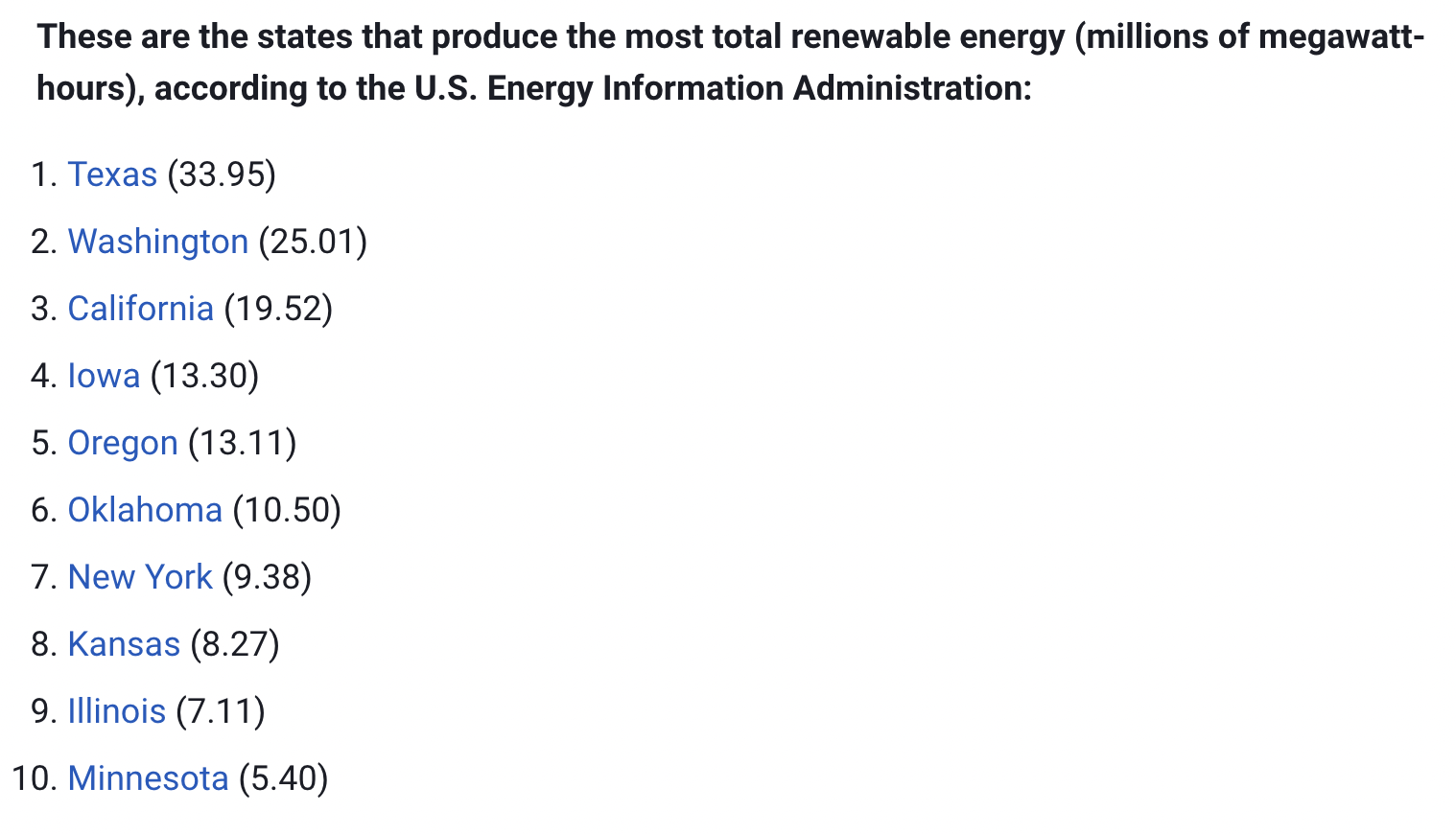 Top Renewables States/https://www.usnews.com/news/best-states/slideshows/these-states-use-the-most-renewable-energy
Top Renewables States/https://www.usnews.com/news/best-states/slideshows/these-states-use-the-most-renewable-energy
The WSJ may be correct to point out that the "conclusion is clear. The left's green-energy transition is incompatible with a growing economy and improving living standards. Renewables don't provide reliable power 24 hours a day, 365 days a year, and the progressive campaign to shut down coal and gas plants that do will invariably result in outages."
The report says the large growth in data center activity alone has and will impact energy resources. "The PJM footprint is home to Data Center Alley in Loudoun County, Virginia, the largest concentration of data centers globally. The Load Analysis Subcommittee (LAS) review found "data center load growth rates to be over 300% in some cases." The following graph shows the impacts of electrification and data center load on forecasts.
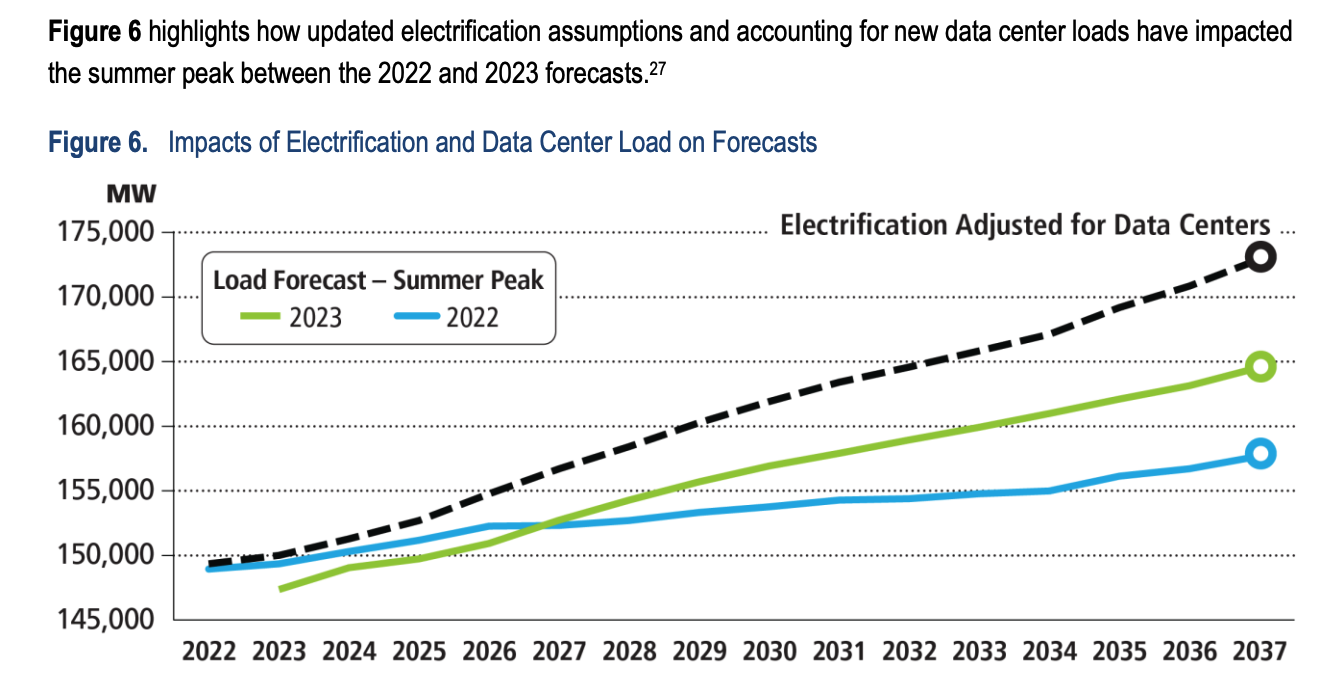 Data Center Loads/Summer/Load Forecasts/https://www.pjm.com/-/media/library/reports-notices/special-reports/2023/energy-transition-in-pjm-resource-retirements-replacements-and-risks.ashx
Data Center Loads/Summer/Load Forecasts/https://www.pjm.com/-/media/library/reports-notices/special-reports/2023/energy-transition-in-pjm-resource-retirements-replacements-and-risks.ashx
A 2021 paper published in Nature agrees consumers should be concerned about the reliability and costs of renewable energy. Researchers found that net-zero emissions requirements that rely heavily on green energy will create "spatial and temporal mismatches between resource availability and electricity demand," challenging system reliability. Using 39 years of computer-generated wind and solar data from "42 major countries," the study shows that a move to green energy is based on "unrealistic assumptions and ignores important costs associated with renewable energy developments." The Nature study shows some countries could be without power 9 percent of the time and others as much as 28 percent of the time. The facts are that "the sun doesn't always shine, and the wind doesn't always blow."


